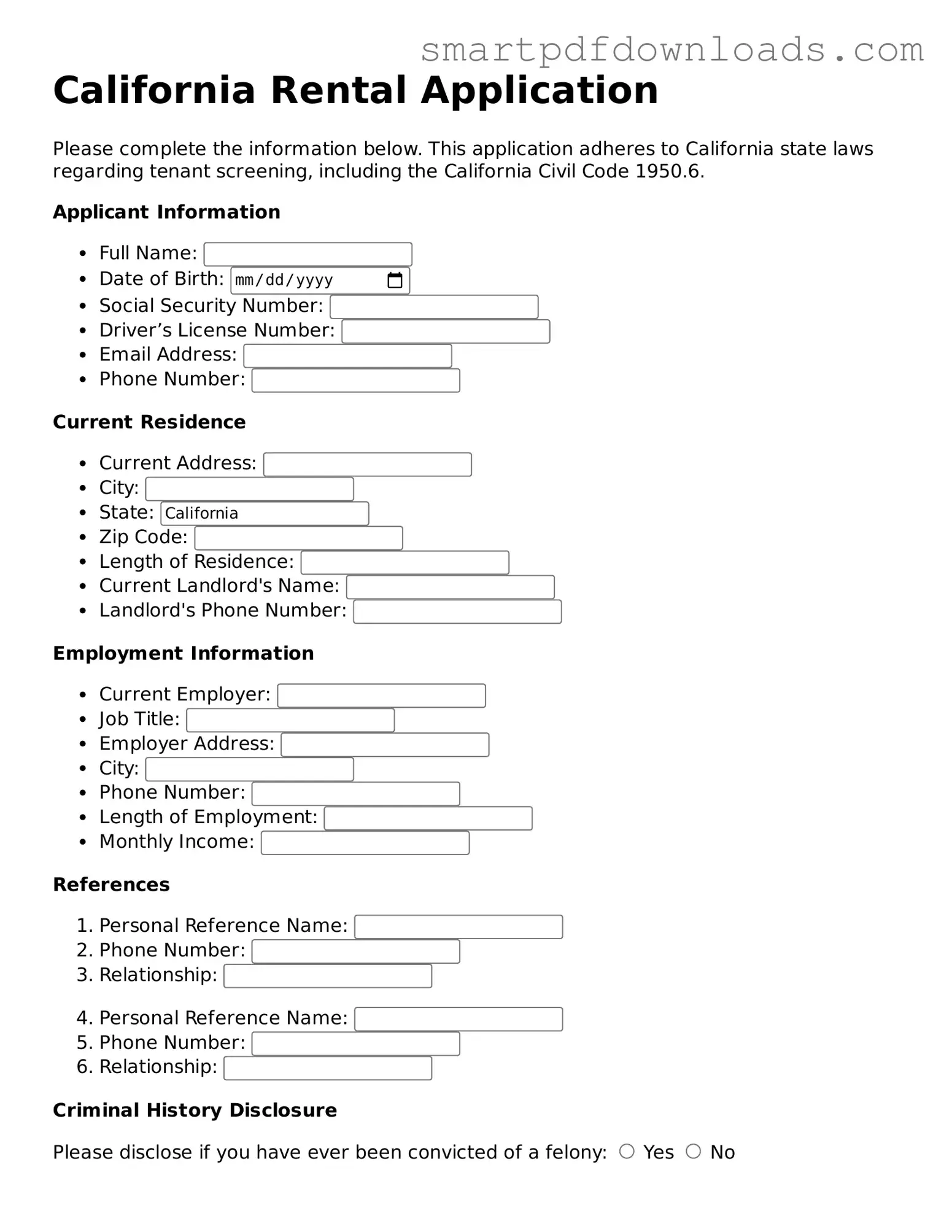Legal Rental Application Form for the State of California
The California Rental Application form is a crucial document used by landlords to screen potential tenants. This form collects essential information about an applicant's background, rental history, and financial status, helping landlords make informed decisions. Understanding its components and implications can empower both renters and landlords in the leasing process.
Edit Rental Application Online
